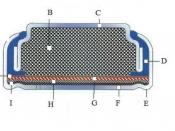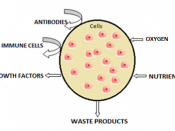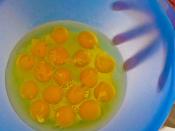Prediction
Osmosis is defined as áçthe movement of water molecules across a partially permeable membrane from a region of high water concentration to a region of low water concentrationáè.
In a high concentration of water the amount of solute (e.g. sugar) is low. This could be called a weak or dilute solution. In a low concentration of water the amount of solute (e.g. sucrose) is high. This could be called a strong or concentrated solution. When two such solutions are divided by a semi-permeable membrane the water will move from the area of high concentration to the area of low concentration, until both sides are equal (have reached equilibrium).
Knowing that osmosis will occur across a semi-permeable membrane whenever there is a difference between the water concentrations on the two sides of the membrane, and knowing that when this happens to cells they will either become turgid if water flows into them, or plasmolysed if water flows out of them, and thus change their volume, we want to test the hypothesis that:
If the concentration of a solution into which a cylinder of potato is placed is greater than a certain level the cylinder will contract, and if the concentration is less than that level it will expand.
This can be seen in living cells. The cell membrane in cells is semi-permeable and the vacuole contains a sugar/salt solution. So when a cell is placed in distilled water (high water concentration) water will move across the semi-permeable membrane into the cell (lower water concentration) by osmosis, making the cell swell. This cell is now referred to as turgid. If done with potato cells the cells would increase in length volume and mass because of the extra water. If these potato cells were placed in a solution with a low water...


